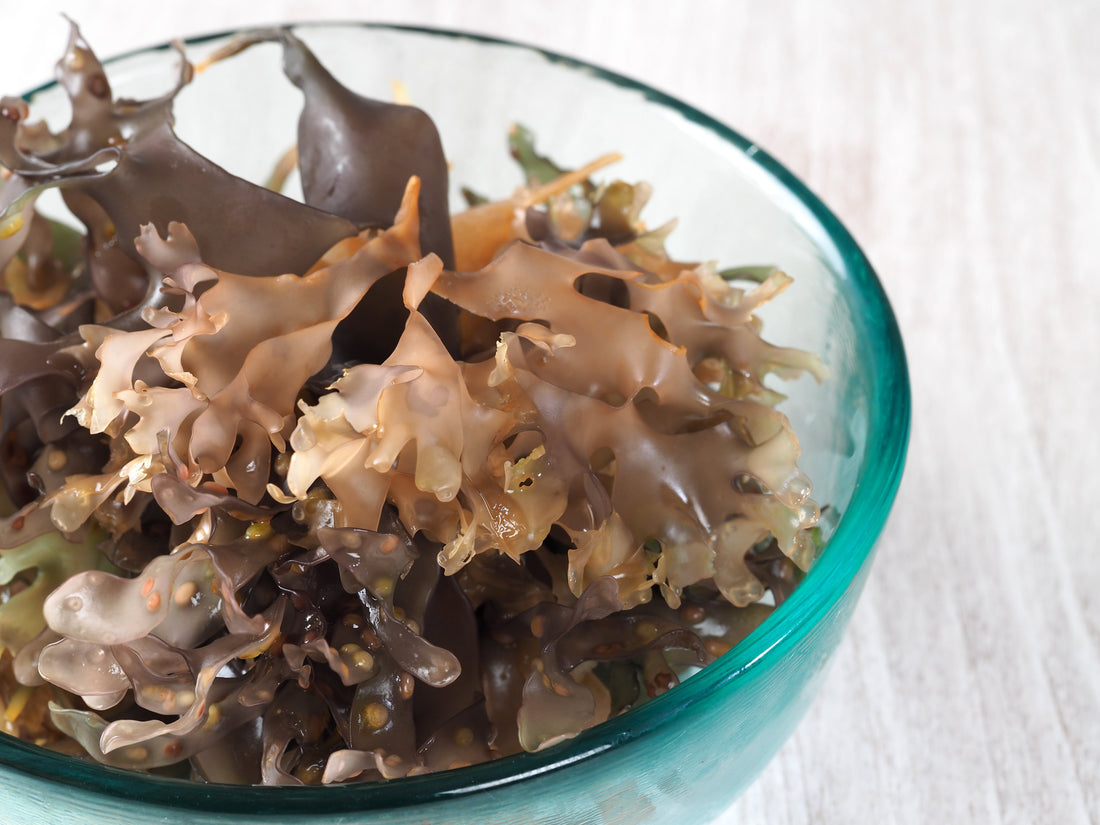
The Difference Between Fake and Real Sea Moss: How to Tell if Your Sea Moss is Fake
But how can you protect yourself? What should you look for when you're trying to find out the differences between fake and real sea moss? Here are a few of the most important things to consider.
Wildcrafted vs. Pool Grown Sea Moss
Sea moss that's grown in the wild will have a rugged, rough appearance. When sea moss is grown in a pool, it has a smoother, silkier look. These looks are very different, and that can help you spot sea moss that's not real. You naturally want sea moss that's truly grown in the sea, and not something that's cultivated in a pool. It's simply not the same.
If you work with herbs at all, you can use any of the principles that you would use to identify those herbs to also help you identify sea moss. If you're not used to working with herbs, and not sure what you should be looking for, the rugged vs. smooth look is just the starting point.
In addition to the smoothness of your sea moss, you also want to take a look at the salt content. Authentic sea moss will have some salt, but shouldn't have a lot. Fake sea moss, or any that's grown in a pool, will generally have a lot more salt. You should be suspicious of any sea moss that claims to be authentic but is covered with salt.
Make Sure Your Sea Moss Smells Like the Sea
Any sea moss that has a chemical smell is very likely fake. Real sea moss smells like the ocean, or fish. You can tell that it came out of the sea, and it shouldn't smell processed or chemically treated in any way. It should also feel dry, and have a mesh or spongy appearance that's not uniform.
Fake sea moss often looks more like noodles, and will feel slippery and slightly wet. That's a big difference from the chunky, stringy, dry feeling of authentic sea moss. The color can also matter, so take a close look at it. Real sea moss has a dark tan or slightly brown color, and can sometimes look golden.
In contrast, pool-grown or fake sea moss is yellowish or lighter in color, and doesn't have the same contrast and depth of color that its authentic counterpart does. You also won't find any hint or remnants of sand in fake sea moss, since sand would come from the ocean.
Soaking Your Sea Moss Can Give You Answers
One of the ways you can test whether your sea moss is real or fake is to soak it in water. Real sea moss doesn't thicken when you soak it, but the fake sea moss will. Fake sea moss will also become gummy feeling when soaked in water, where the real, authentic sea moss will have a slimy, more jelly-like feel to it.
The thinner stems also help you identify real sea moss, as the stems on pool-grown varieties are often a lot thicker. You can expect to pay less for fake sea moss, but what are you really getting? It's generally better to spend a little more and get the real thing, so you know you have the quality and value you're expecting.
What's the Bottom Line?
The bottom line is that real sea moss is going to cost a little more than fake sea moss, but you're getting a lot higher quality product that's much better for you. Before buying any sea moss, make sure you're choosing something authentic. To do that, look for:
- A dry feel
- A small amount of salt
- An ocean or fish smell
- Thinner stems
- A darker color
- A mesh or spongy appearance
- A chunky, stringy look
By taking the time to examine your sea moss, and by purchasing from trusted sources, you'll feel confident that you're getting what you're paying for and what will provide you with the biggest benefits. Explore more on sea moss benefits:
- Sea moss benefits for acne
- Sea moss benefits for hair
- Sea moss benefits for blood pressure
- Sea moss benefits for weight loss
- Sea moss benefits for skin
- Sea moss benefits for eczema
- Sea moss for detox
- Sea moss for diabetes
- Sea moss for bloating
- Sea moss for thyroid
At Alkaline Herb shop we only sell 100% authentic, real sea moss that is wildcrafted and sustainably harvested. You can find real sea moss in products like our raw chondrus crispus gold and raw chondrus crispus purple and gold. We know quality and value are important to you, and want to be your trusted supplier of sea moss and other wellness products.
https://alkalineveganlounge.





.png?v=14052428765372906161761701960) Previous Post
Previous Post
%20copy.png?v=62173825240595680121761701960)